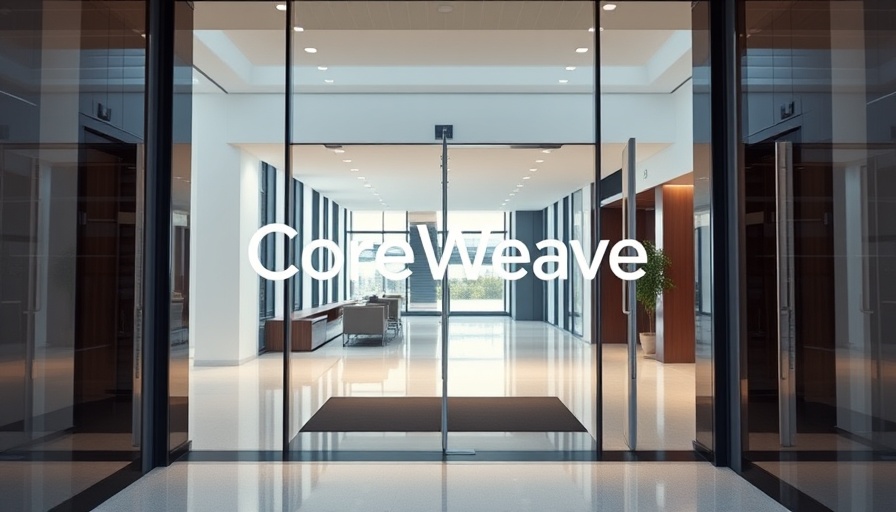
The Big Move: CoreWeave's Debt Financing Strategy
In the fast-paced landscape of artificial intelligence (AI) and cloud computing, CoreWeave Inc. is making headlines just weeks after its public offer. The company is in search of a significant $1.5 billion in debt financing to bolster its operations, particularly after a rather tepid IPO last March.
Understanding CoreWeave's Financial Landscape
With JPMorgan Chase & Co. reportedly at the helm of this fundraising effort, many industry observers are watching closely. CoreWeave originally launched as a cryptocurrency mining operation in 2017 using powerful graphics processing units, but has transitioned its focus to AI workloads as demand for cloud computing power surged. The company currently operates an impressive infrastructure comprising 32 AI-optimized data centers, collectively housing around 250,000 graphics cards.
The ambitious financing plan follows a perspective of significant debt exposure; CoreWeave has borrowed a staggering $12.9 billion in just the past two years, with $8 billion still on its balance sheet at the end of 2024. Experts speculate that this new fundraising initiative may serve to refinance some of these existing liabilities, which are expected to incur approximately $7.5 billion in interest payments by the end of 2026.
Market Reactions Post-IPO
CoreWeave's IPO raised $1.5 billion by selling 37.5 million shares, yet this was notably less than the $2.7 billion initially sought. The stock experienced volatility following its market debut, opening lower than expected before experiencing a brief rebound. This fluctuation is in line with the unpredictable nature of technology stocks, particularly those linked to emerging sectors like AI.
The company faced further challenges when Microsoft Corp., which contributes roughly two-thirds of CoreWeave's revenue, reported plans that could significantly impact CoreWeave's business trajectory. Microsoft is expected to invest $80 billion in new data center capacity, a move that could create a competitive environment for cloud service providers.
Customer Contracts and Future Outlook
In addition to Microsoft, CoreWeave's client roster includes high-profile companies like Meta Platforms Inc., OpenAI, and Cohere Inc. Insights suggest that OpenAI has recently taken over a substantial data center contract after Microsoft opted not to extend theirs. This signals a potential shift in the cloud service landscape.
To stimulate demand for its services, CoreWeave has announced plans to diversify its offerings further, including expanding software products available to cloud customers. The acquisition of AI development tools provider Weights & Biases Inc. for approximately $1.4 billion underlines an intent to integrate deeper into the AI infrastructure space.
Strategic Expansion and Power Usage
To accommodate its growth projections, CoreWeave’s infrastructures currently utilize over 360 megawatts of power—equivalent to the consumption of several hundred households. With contracts in place for 1.3 gigawatts of future power usage, the company is positioning itself for a considerable expansion in its data center network.
As the landscape for AI and cloud computing evolves, CoreWeave is evidently committed to maintaining a competitive edge. With the financial strategies being put in place, executives and decision-makers should keep an eye on this company's next moves, both for insights into innovative business strategies and for lessons on the implications of debt financing in an ever-changing tech environment.
 Add Row
Add Row  Add
Add 




Write A Comment